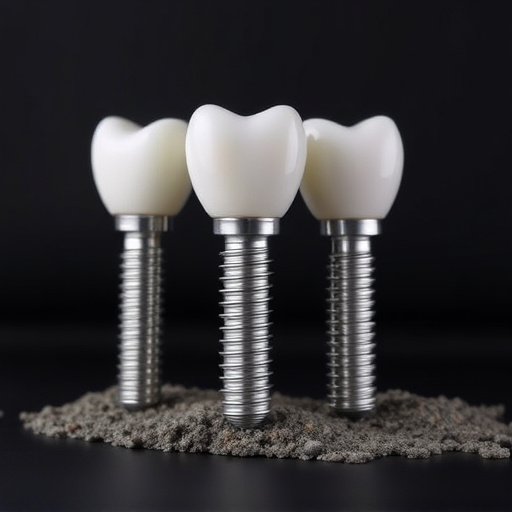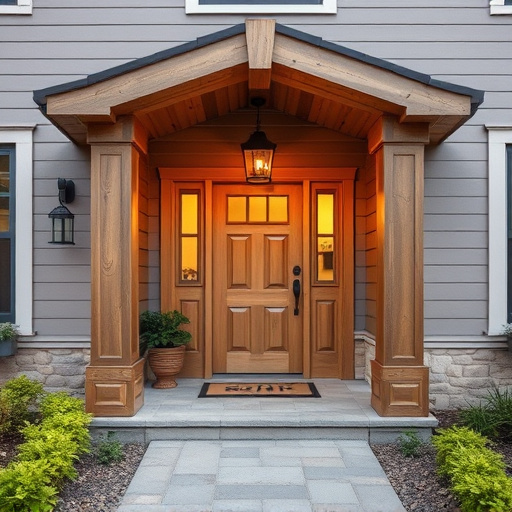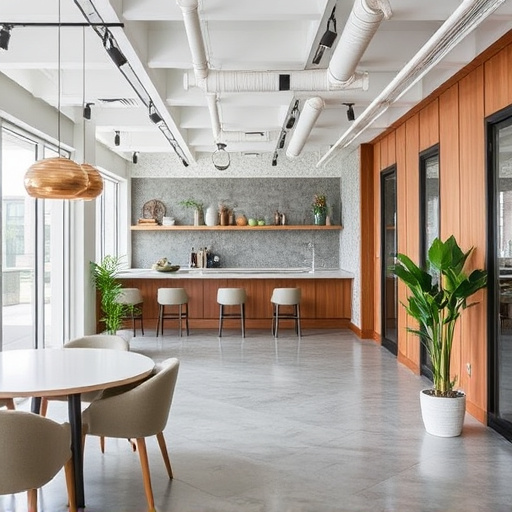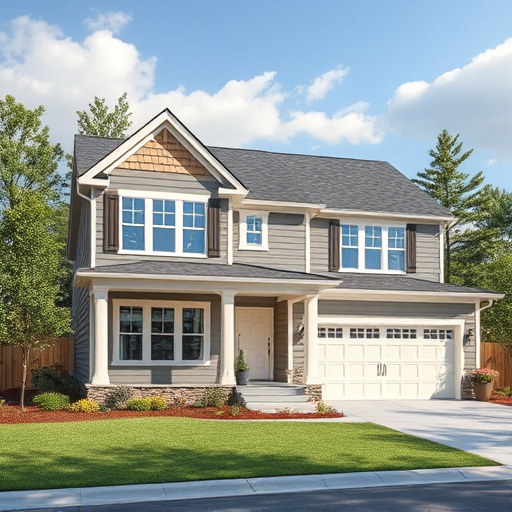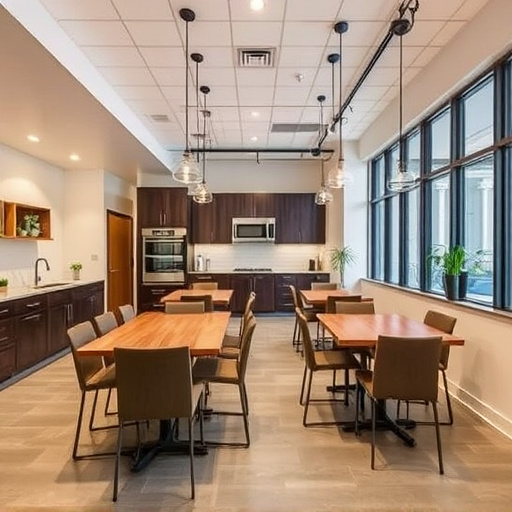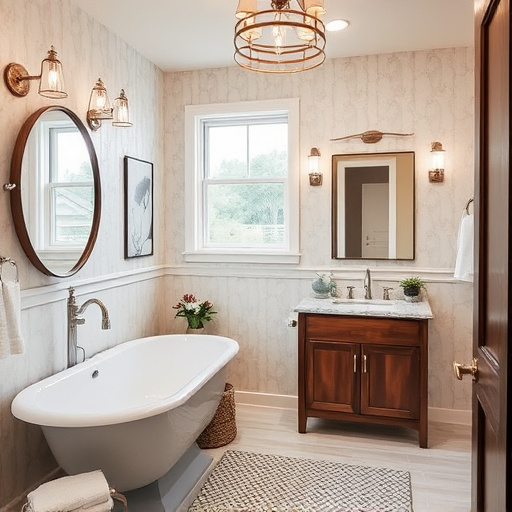Flooring upgrade significantly impacts a room's acoustics, with hard surfaces reflecting sound and softer materials absorbing it. This is crucial for optimal audio environments in spaces like home theaters or studios. Customized flooring solutions enhance noise control, aesthetics, and comfort during residential renovations, transforming spaces for better relaxation and gatherings. Strategic replacements, like wood or tile over carpet, reduce echo, while area rugs absorb sound in open-concept areas, contributing to a harmonious, pleasing environment.
A flooring upgrade isn’t just about aesthetics; it can significantly impact room acoustics, transforming spaces into more pleasant environments. This article delves into the acoustic properties of various flooring materials and how they interact with sound waves and reflections. We’ll explore simple yet effective changes you can make post-upgrade to optimize room acoustics, ensuring better sound quality for music, movies, and everyday conversations. Discover how a strategic flooring upgrade can revolutionize your space’s auditory landscape.
- Understanding Acoustic Properties of Flooring Materials
- How Floor Coverings Affect Sound Waves and Reflections
- Simple Changes for Better Room Acoustics After Upgrading Floors
Understanding Acoustic Properties of Flooring Materials
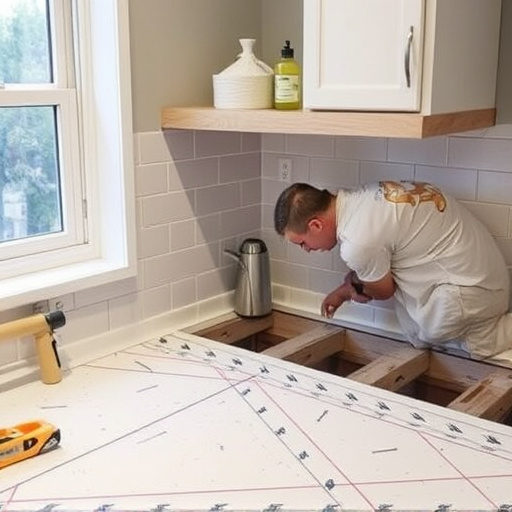
The acoustic properties of flooring materials play a significant role in shaping the sound environment within a room. Different flooring types have varying levels of absorbency and reflectivity, which directly impact how sound waves interact with the space. For instance, hard and smooth surfaces like tile or wood tend to reflect sound, potentially leading to echo and reverberation, while softer materials such as carpeting or cork are highly absorbent, reducing these effects. When considering a flooring upgrade, especially in spaces where acoustics matter, like home theaters or recording studios, understanding these properties becomes crucial.
A flooring upgrade can significantly alter the acoustic landscape of a room, either enhancing or disrupting the current sound profile. In the context of kitchen renovations or other home improvement services, selecting materials with specific acoustic characteristics can contribute to better noise control and overall comfort. Customized work that takes into account the unique dimensions and layout of a space allows for tailored solutions, ensuring that the flooring not only looks aesthetically pleasing but also contributes to a more harmonious auditory environment.
How Floor Coverings Affect Sound Waves and Reflections
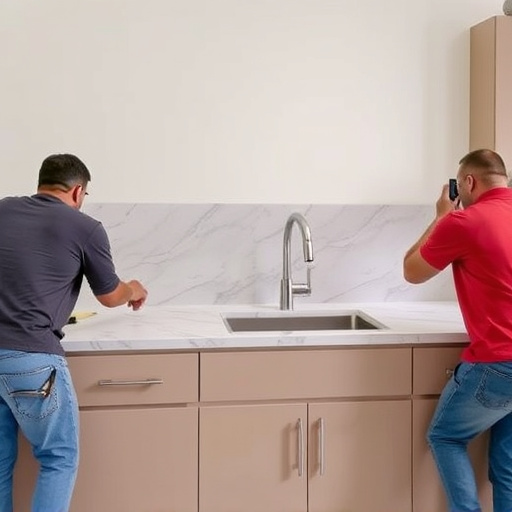
The type of flooring you choose can significantly impact the way sound travels and reflects within a room. Hardwood, tile, or concrete floors tend to be more reflective, sending sound waves directly across the space. This can result in echoey or noisy environments, especially in larger rooms or open-concept areas. On the other hand, softer floor coverings like carpeting or certain types of vinyl absorb sound waves, reducing reflections and creating a quieter atmosphere.
When considering a flooring upgrade as part of residential renovations or whole house remodels, it’s essential to think about the acoustic properties of different materials. Customized home renovations offer an opportunity to enhance room acoustics by selecting floor coverings that complement the space’s design while addressing sound-related concerns. By strategically choosing flooring, you can create more comfortable and acoustically pleasing environments for various activities, from relaxing at home to hosting gatherings.
Simple Changes for Better Room Acoustics After Upgrading Floors
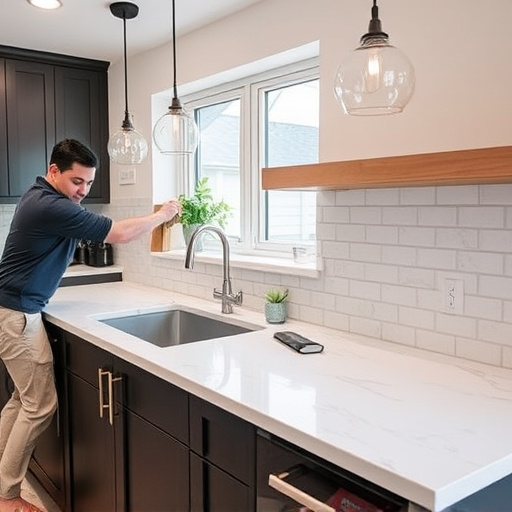
Upgrading your floors can bring a fresh look to any room, but it also offers an unexpected benefit—improved acoustics. Simple changes in flooring can significantly impact how sound travels and reflects within a space. For example, replacing carpeting with harder surfaces like wood or tile can reduce reverberation, making conversations more clear and minimizing the echo effect that often occurs in larger rooms.
Additionally, incorporating area rugs into your new floor plan acts as a natural sound absorber, especially in open-concept areas. Customized home renovations don’t stop at flooring; they encompass a holistic approach to enhancing your living environment. From exterior painting to interior design choices, every element contributes to creating a harmonious and acoustically pleasing space that caters to your preferences.
A flooring upgrade isn’t just about aesthetics; it significantly influences room acoustics. By understanding the acoustic properties of different materials, we can strategically choose coverings that minimize sound reflections and reverberation, enhancing speech clarity and overall auditory comfort. Simple changes, such as incorporating soft or absorbing surfaces like carpets or certain types of wood, can dramatically improve a space’s acoustics after upgrading floors, creating more welcoming and functional environments for various purposes.

